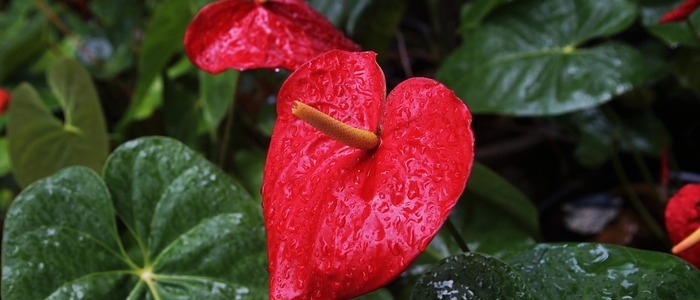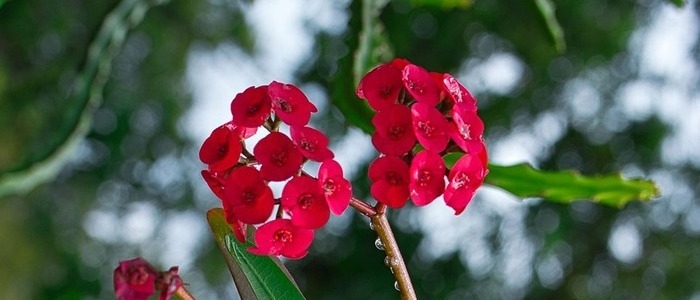Wax begonias are a popular flowering annual plant that adds vibrant color to any garden. With their trailing stems and bright blooms, wax begonias can bring beauty and life to borders, mass plantings, window boxes, and containers alike. They’re an easy-care addition to your garden that will bring you joy for years to come.
Wax begonias grow best in partial shade and have stems that range from 6-12 inches long. These stems can be either smooth or fuzzy depending on the variety of wax begonia you choose. As summer approaches, these beautiful plants produce clusters of white, pink or red flowers that attract pollinators into your garden while adding a touch of elegance to the landscape.
In addition to their stunning appearance, wax begonias are also one of the easiest plants to grow and maintain. With proper care, they are sure to thrive in most gardens with minimal effort from the gardener – making them an ideal choice for those who don’t have much experience with gardening but still want beautiful results!
By following this guide, you’ll learn everything you need to know about planting, watering, fertilizing and propagating wax begonias as well as how to identify and address any common problems associated with this lovely flower. Read on for all the information needed so that you can confidently bring the beauty of wax begonias into your garden!
Wax Begonias Frequently Asked Questions
What is the difference between wax begonias and begonias?
The main difference between wax begonias and begonias lies in their growth habits and foliage characteristics. Wax begonias, also known as fibrous begonias, have a compact and bushy growth habit with waxy and shiny leaves. They are often grown as annuals and are popular for their abundant and long-lasting flowers. On the other hand, begonias refer to a diverse group of plants that includes wax begonias but also encompasses other types such as tuberous begonias and rhizomatous begonias. These different begonia types can have varying growth habits, leaf shapes, and flower forms.
What are the watering requirements for wax begonias?
Wax begonias have moderate watering requirements. Overwatering can lead to root rot, so it is best to allow the top inch of soil to dry out before watering again. Additionally, it is important to water them at the base of the plant to avoid wetting their leaves, as this can increase the risk of fungal diseases. Regularly monitoring the soil moisture and adjusting the watering accordingly will help keep wax begonias healthy and thriving.

Planting Wax Begonias
Planting Wax Begonia is a simple but important step to ensuring the success of this beautiful flowering plant. To begin, select a spot in your garden that receives partial sun throughout the day and has well-draining soil. Dig a hole twice as wide and twice as deep as the root ball of the plant and mix in compost or organic matter to improve drainage. Next, fill in the hole with amended soil and water immediately after planting and keep it moist until the plant is established.
Once planted, Wax Begonia will need weekly watering and occasional fertilizing during its growing season (usually April through September). Be sure not to overwater – too much can cause root rot or other health issues for your plants. As you water, also be sure to check for pests such as slugs or caterpillars that may be damaging your plants’ leaves. If you find any, remove them by hand or use a pesticide if necessary.
To ensure optimal growth for your Wax Begonias, give them plenty of space to grow and spread out their roots. Prune back dead stems or damaged leaves regularly so they don’t take energy away from new growth. Finally, adding mulch around the base of your plants will help maintain moisture levels in the soil so you don’t have to water as frequently during dry spells.
With proper care, Wax Begonia are sure to thrive all season long! Following these steps will provide readers with everything they need for successful planting and maintenance of their own wax begonias – making them an ideal choice for novice gardeners looking to add vibrant color into their gardens!
Watering and Fertilizing Wax Begonias
Ensuring your Wax Begonia remains happy and healthy requires regular watering and fertilizing. To achieve the best results, it’s important to use lukewarm water when watering your plants. This is especially true in warm climates as this helps prevent root rot caused by overwatering. Aim to give each plant about 1-2 inches of water each week, preferably early in the morning before the hot sun can cause too much evaporation.
As well as regular watering, it’s also beneficial to apply a balanced fertilizer once a month during Wax Begonia’s growing season. Dilute liquid fertilizer to half strength so that plants receive all necessary nutrients for optimal growth without risk of over-fertilizing. A foliar feeding with diluted liquid fertilizer can provide an extra boost – spray lightly on both sides of leaves and stems at least once per month or when new growth appears.
Pest infestations can be problematic for Wax Begonia, so check regularly for aphids or mealybugs and take action quickly if found. Pruning back dead stems or damaged leaves is recommended every now and then to encourage new growth; however, do not prune too aggressively as this could shock your plant or reduce flowering potential! Finally, adding mulch around the base will help maintain soil moisture levels while providing insulation from extreme temperatures – a great way to make sure you enjoy beautiful floral displays throughout summer!
How to Propagate Wax Begonias
Propagating Wax Begonia is a great way to increase the beauty of your garden without having to purchase additional plants. This section will provide step-by-step instructions on how to successfully propagate Wax Begonia from stem cuttings.
The first step in propagating Wax Begonia is selecting a sterilized potting mix with a pH between 5.5 and 6.5. This soil should be light and well-draining, as heavy soils can cause waterlogging which can lead to root rot. The following summer months are the best time to take stem cuttings from the parent plant, as this is when it experiences the most growth.
When taking stem cuttings, it’s important to ensure that each cutting has at least two small sets of leaves and no flowers or buds present. Before planting, remove the bottom two-thirds of leaves along the cutting and dip it into a rooting hormone powder or gel solution for 20 seconds in order to encourage root growth.
Afterward, insert the cutting into moistened potting mix up to its lowest set of leaves, lightly cover with plastic wrap and place it in a bright location out of direct sunlight until new roots begin forming (this usually takes about four weeks). Once roots have formed, remove plastic wrap and allow the plant some time acclimatize before transplanting outdoors after all danger of frost has passed.
Propagating your own Wax Begonia from stem cuttings is an easy process that requires minimal effort but yields beautiful results! With proper care and attention, these plants will thrive all season long and bring plenty of color and life into your garden!
Common Problems with Wax Begonias
Common Problems with Wax Begonia Wax Begonia is a beautiful annual plant that can bring color and life to any garden, but like all plants, they are susceptible to certain common problems. From poor drainage leading to root rot, to aphids or mealybugs taking up residence in the foliage, it’s important for gardeners to be aware of these potential issues so they can act quickly if necessary.
Poor Drainage: Poor drainage can lead to root rot in Wax Begonias, as their roots cannot handle standing water for long periods of time. If you notice a yellowing of the leaves or stunted growth, it may be an indication that your soil has too much moisture. To prevent this issue from occurring, make sure the soil is well-draining and not overly moist when planting Wax Begonia. Additionally, avoid overwatering by sticking your finger into the soil and only adding more water if it feels dry a few inches below the surface.
Aphids/Mealybugs: Aphids and mealybugs are small insects that feed on plant sap and can cause damage to Wax Begonia if left unchecked. They are usually found in clusters on or around stems and leaves and will leave behind a sticky residue called honeydew which encourages mold growth. To get rid of them you need to spray the plant with an insecticidal soap solution or neem oil every few days until they are gone.
Overfertilizing: Too much fertilizer can cause leaf burn and discoloration in wax begonias due to excess nitrogen which leads to rapid growth spurts followed by sudden wilting of the leaves. To avoid this issue, use a balanced fertilizer once a month during its growing season at half strength or less than what is recommended on the package instructions. Additionally, foliar feeding with diluted liquid fertilizer should also be done sparingly as an extra boost when needed.
Too Little Light: In order for wax begonias to thrive they need partial sun exposure throughout most of the day; without enough light their growth will be stunted and flowers may fail to bloom properly. To ensure proper light exposure try selecting a spot that receives at least four hours of direct sunlight per day, but avoid full sun as this could result in scorching of the delicate foliage.
Too Much Water: While wax begonias need regular watering in order for them to stay healthy, too much water can lead to fungal growths such as powdery mildew on their leaves. This is usually caused by humid conditions combined with poor air circulation causing moisture build-up on surfaces. To prevent this problem from occurring, try cutting back on watering during hot weather spells while keeping an eye out for signs of fungus forming on stems or leaves.
Conclusion
Conclusion Growing and caring for Wax Begonia can be a rewarding experience. With the right knowledge and care, these plants can bloom all season long and bring vibrancy to any garden. This guide has provided gardeners with all the necessary information they need to successfully plant, water, fertilize, and propagate Wax Begonia. It has also given advice on how to identify common problems associated with this flowering plant so they can quickly address any issues that arise.
For those looking for more information on growing Wax Begonia, there are many great resources available online, such as gardening blogs and forums. Additionally, readers may want to consider joining a local horticultural society or attending a gardening show or event in their area.
We invite readers to leave a comment with their experiences of growing Wax Begonia, as well as share any tips or questions they have about caring for these beautiful plants.
Finally, we remind readers to follow the advice given in this post to make sure their Wax Begonias thrive throughout the season. By taking the time to properly care for these plants, gardeners will be rewarded with vibrant blooms year after year! We also encourage readers to sign up for our email list or follow us on social media for more helpful tips and tricks on how best to enjoy your Wax Begonias!
Other Red House Plants













